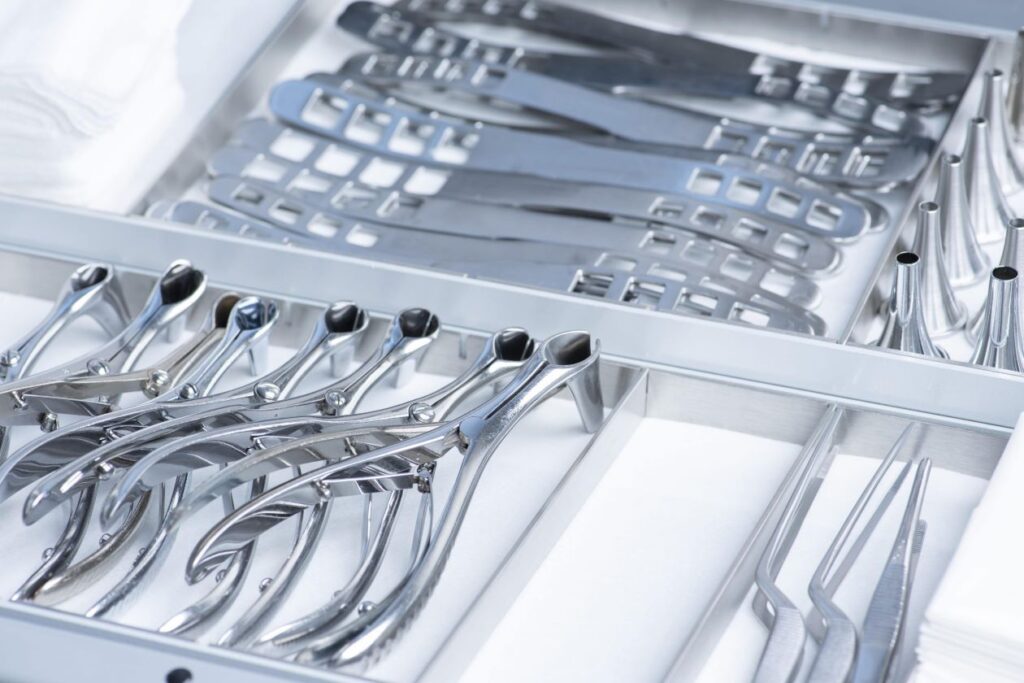Accident mortel: an ignored 0.3mm error
Au mois de mars 2023, Un accident médical majeur s’est produit dans un centre médical: lors d’un pontage cardiaque, l’étiquette RFID sur la pince chirurgicale en alliage de titane est tombée après plus de 120 Stérilisations à la vapeur à haute pression, faire tomber l’instrument dans le corps du patient. Des enquêtes ultérieures ont révélé que:
The epoxy resin encapsulation layer deformed by 0.3mm at 135°C
This incident directly promoted the addition of RFID tag fatigue test clauses to the AAMI ST79:2024 norme:
“All reusable device tags must pass 200 sterilization cycle verification”
—— Association for the Advancement of Medical Instrumentation, 2024

Extreme test: Destruction mechanism of three sterilization methods on RFID tags
Experimental design
| Sterilization type | Test conditions | Key indicators |
| Vapeur à haute pression | 134°C/18min × 200 cycles | Chip failure rate, packaging layer cracking |
| Oxyde d’éthylène (ETO) | 54°C/60%RH × 72h | Antenna corrosion rate (μm/h) |
| Plasma de peroxyde d’hydrogène | 1000 pulse discharges | Memory data bit error rate |
High-pressure steam group: When temperature meets time
- après 200 cycles, the chip failure rate is only 0.7%,
- Using laser welding titanium alloy packaging technology,
- Ordinary PET labels have packaging layer peeling after the 83rd cycle.
Ethylene oxide group: invisible corrosion crisis
The corrosion rate of ETO gas on copper antenna is 2.1μm/cycle. When the corrosion depth exceeds 30% of the antenna thickness:
- The reading distance is attenuated by 58%
- The tag life is shortened to 37 sterilizations
Solution:
- Use gold-plated antenna (corrosion rate reduced to 0.03μm/cycle)
- Comply with ISO 11135:2014 gas permeation barrier standard
Plasma group: Data disaster caused by high-frequency discharge
In a strong plasma field, Impinj H39 chip showed:
- Memory data bit flip rate: 1.2×10⁻⁴/pulse
- Reduced to 3×10⁻⁷ after using error correction coding (ECC)
Key conclusions:
- Tags that support ISO/IEC 15693 ECC protocol should be selected
- 15% redundant space should be reserved for storage capacity
Decision-making critical point: These numbers determine life and death
- Sterilization frequency > 3 times/day: Only Class A tags (such as STID Medical XT/XF series) are qualified
- ETO concentration > 800mg/L: Fully sealed ceramic tags must be used
- Plasma pulse > 500 fois: Memory needs to be configured with dual-bank storage architecture
________________________________________
Apply for RFIDHY medical sample package to get:
3 types of sterilization compatible tags
50 free sterilization tests






